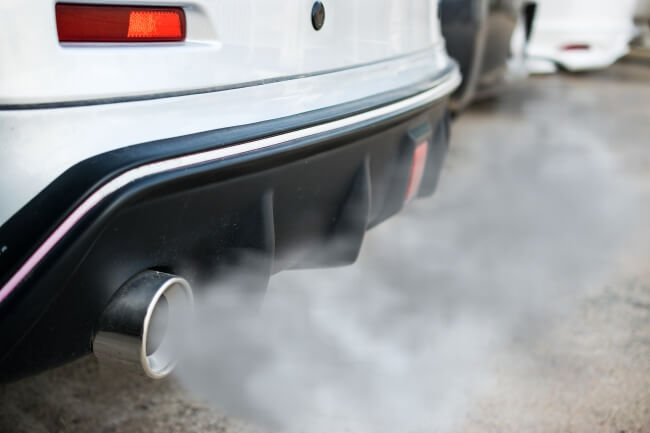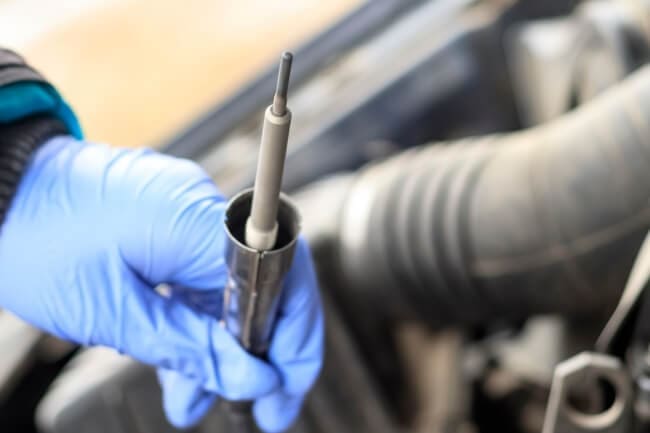
Every car enthusiast does everything to keep their vehicle in perfect condition. An inspection, for example, is usually carried out every two years and gives the vehicle owner the opportunity to get a detailed assessment of the current condition of the various assemblies and units of the vehicle from experts in a workshop. Thus, the vehicle owner is informed about the costs that will have to be invested in the vehicle in the future. But it’s not just the larger assemblies and units that are crucial for a vehicle to function and start smoothly. The smooth functioning of the glow plugs is also very important at this point. As most are well aware, diesel engines are compression ignition, which means that the injected fuel ignites without the need for a spark. But how exactly does this process work? And what are afterglow glow plugs? We want to go into more detail on these and a few other questions below.
Contents
How exactly does the process work?
The function of a glow plug is very simple. First of all, air is sucked in, which is then compressed to up to 55 bar and heated up to 900 degrees. Now diesel is injected into the combustion chamber. Since the air is at such a high temperature, auto-ignition will now take place. This is followed by an increase in internal pressure so that the engine is now efficient. The injection systems of the compression-ignition engines are more complex at this point, just like the design of the units and systems. But what are afterglow glow plugs? You should know that today’s modern vehicles are mostly produced with afterglow glow plugs. They differ from traditional glow plugs in that they glow during start-up, before, after, and also while the engine is running. This process begins as soon as the ignition lock is actuated. If the temperature outside is normal, it can take 3 to 5 seconds for the engine to reach the ideal operating temperature. But how exactly does a quick start of the glow plugs work? Here you should know that the engineers have succeeded in reducing the afterglow glow plugs to a glow time of up to five seconds.
What is the lifespan of a glow plug?
As far as the service life of these parts is concerned, this naturally varies depending on how much and intensively a vehicle is used. Because the more a car is driven, the more starts there are logically, so the wear of the glow plugs is also significantly higher. However, one can generally assume that the glow plugs have to be changed every 150,000 km. This tends to be the case for vehicles that get a lot of long-distance driving, which is generally a good thing for diesel-powered vehicles. However, if you are more on the road for short distances, then you can also have to be prepared for the fact that a replacement could be necessary here after only 50,000 km. You should also know that these parts are made of either ceramic or metal. The newer models are mostly made with ceramic components because these products are better able to withstand high temperatures. In addition, preheating can be accelerated here. However, make sure that when you replace it, you always replace the glow plug that is also compatible with the car model you drive. This is essential to ensure ideal function and not damage other assemblies. In the following, we want to go into detail about the steps you should take when replacing the glow plugs.
Defective glow plugs – what are the signs?

In order to be able to react quickly to defective glow plugs, you should know the signs that indicate defects or problems. If you notice that your vehicle’s engine is jerking or otherwise sounds unsteady, then this is usually a sign of problems with the component in question. Especially when you find that the engine sounds better after it’s warmed up. However, a noticeable development of smoke from the engine compartment after starting the car can also indicate defects. If the preheating period is also extended, this usually indicates gradual faults in the components. However, errors do not always show up gradually: in the worst case, the engine cannot be started at all. But here, too, it is important to remain calm. Replacing the defective component usually solves the problem completely. In addition, such a change is anything but complicated. In the following we would like to go into the steps that should be observed when replacing the glow plugs.
Can I do the exchange myself and how does it work?

In general, this component can also be changed by laypersons. All you should bring with you is a little technical skill and the necessary basic knowledge about vehicles in general. However, if you have no experience with small repairs or replacements on your car, then we recommend that you contact specialists or at least an experienced professional who will look over your shoulder for support. Do you dare this task? Then here are the steps you should follow:
- First disconnect the negative pole from the battery.
- Dismantle the old glow plugs. Don’t use too much force here! Disconnect the electrical connectors first. Then remove the dirt around the old part. Now the component should be dismantled with a torque wrench. Pay attention to the breaking torque!
- If glow plugs cannot be loosened, you can also work with oil or rust remover.
- If the components have been removed, the shaft must now be cleaned become.
- You can now properly reinstall the new component. Make sure that you want to mount the right component. It must be compatible with the model and engine type of your vehicle. If you are not sure, consult a specialist.
The conclusion and a tip from CarTipsandmore
In summary, it can be said that glow plugs are an indispensable part of the engine, without which an engine cannot be started at all. If glow plugs are defective, the engine either runs jerkily and restlessly, or in the worst case, cannot be started at all. But the good news is: replacing these components is not difficult. If you have some basic knowledge and experience, you can make the switch yourself. In addition, there are no high costs for you. But CarTipsandmore recommends at this point to consider the compatibility of these components. So before you buy the wrong parts, go to a workshop and get expert advice.
